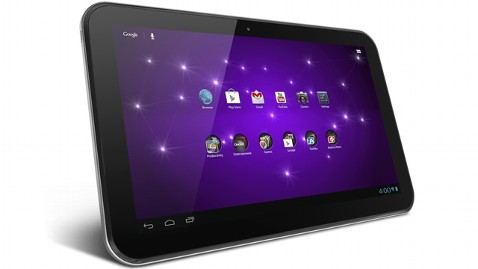Well, to find that answer you really do not need to look any farther than Microsoft. If you remember in our coverage of Windows 8 and IE10 on our 1280x800 sporting Asus EEE Slate EP121 we found that rthe Microsoft Snap feature would not work due to resolution limitations (Snap is only supported on resolutions of 1366x768 or higher). As companies prepare for Windows 8 (which is due out later this year) we will begin to see the resolutions on the tablets in the market become larger. In the interim we will begin to see an increase in the larger sized screens in current models to offset the costs of making a smaller screen with denser pixels. Remember that to compete with Apple Android and even Windows 8 on ARM tablet manufacturers will need to be at the same price point or better. To do this we will see the continuation of the stock 1280x800 10.1 inch IPS displays under Android while the models that will be positioned for Windows will extend into the 13-inch range and also end up with screens that have a much higher resolution.
All of this just to support the Snap Feature (and other items that are resolution locked) on Windows 8. If what we are hearing is accurate (and as of right now we have no reason to believe otherwise) there will be more than one tablet hitting the market soon sporting either a 13-inch display or resolutions of 1600x900 or greater. We do know that Asus is working on one with a 1920x1080 display that will run on Tegra 3, if the timing of this is right we fully expect it to launch for both Windows 8 and Android. As we have been saying, it will be very interesting to see how the market unfolds once there are three real players writing operating systems for ARM based CPUs in addition to the x86 tablets that are certain to drop at the launch of Windows 8.
Discuss this in our Forum

 Toshiba has launched a new lineup of tablets under the name Excite. These are all Tegra 3 models and, for now, run Google’s Android 4. While everyone was unimpressed by the 10.1 tablet (its feature set is very similar to the rest of the crowd). What has really caught the eyes of the press is the rather large Excite 13 with is 13.3-inch IPS 1600x900 display. The common question is why go this large with a tablet screen?
Toshiba has launched a new lineup of tablets under the name Excite. These are all Tegra 3 models and, for now, run Google’s Android 4. While everyone was unimpressed by the 10.1 tablet (its feature set is very similar to the rest of the crowd). What has really caught the eyes of the press is the rather large Excite 13 with is 13.3-inch IPS 1600x900 display. The common question is why go this large with a tablet screen?

